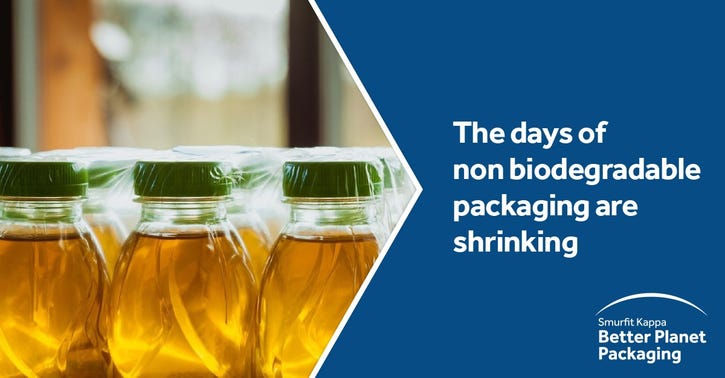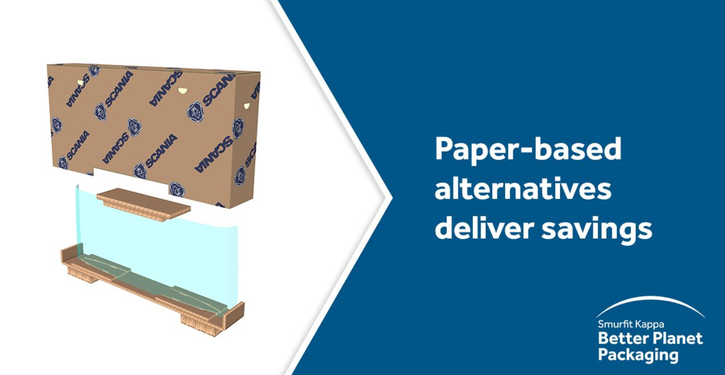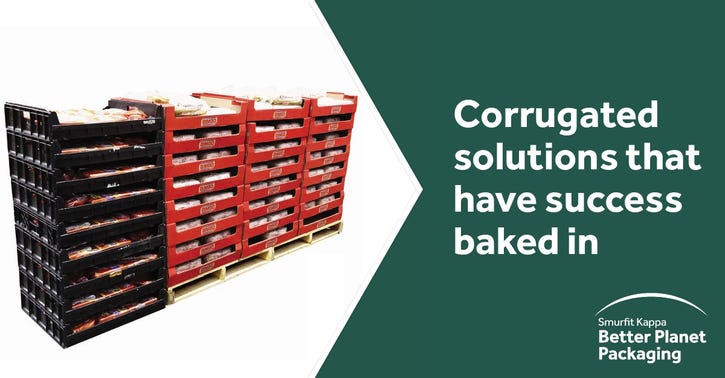Smurfit Kappa’s Pulido on Designing Sustainable Packaging into the Future
Smurfit Kappa's director of innovation on sustainability and packaging discusses what needs to happen to take sustainable packaging design further.

With locations in 35 countries, Smurfit Kappa is one of the largest integrated manufacturers of paper-based packaging products in the world. Its portfolio of pioneering offerings includes corrugated packaging and containerboard, with almost all the raw materials sourced from the company’s own paper mills.
By the end of 2018, Smurfit Kappa realized a 29 percent reduction in carbon dioxide (CO2) emissions from its paper and board mills (over 2005 levels), exceeding its 2020 target. And the company is on its way to 30 percent reduction in waste to landfill by that same year.
Waste360 sat down with German Pulido, Smurfit Kappa's director of innovation on sustainability and packaging, to discuss what needs to happen to take sustainable packaging design further, as well as the technology to help get there. He also highlighted novel ideas that already have come out of a company initiative to develop more environmentally friendly packaging that serves its purpose in its first life and beyond.
Waste360: What are the main challenges facing the packaging industry? And what needs to be part of the plan to tackle them?
German Pulido: Market analysts and the corrugated industry both consider sustainability as the main challenge today. In 2018, humans generated 2,120 million tons of waste, and a very high percentage of that ends up in rivers and oceans. Single-use and non-recyclable packaging make up approximately 40 percent of that contaminating waste.
So, the journey we must undertake as an industry is pretty clear: we need to contribute to the solution of this growing problem by producing packaging that comes from renewable fibers and that can be recycled and is biodegradable. We also need to design and innovate in a way that will reduce CO2 emissions.

Waste360: What do you see as recyclers’ role in addressing the deluge of packaging waste? How can they help the packaging industry curb this waste?
German Pulido: The recycling industry has an important role in continuing the paper lifecycle and in contributing to reducing waste. So, it has a huge responsibility not only with those of us who produce paper-based packaging, but it has a tremendous responsibility to protect the environment.
I see them actively assuming a role as experts and hopefully working hand-in-hand with the packaging industry to go out into communities to teach and train people and make them aware of their co-responsibility in eliminating waste. In joining the effort to educate consumers, they will help guarantee that our fiber sources are of an optimum quality. And they will help see that our water sources will be preserved.
Waste360: You’ve mentioned what you believe recyclers’ role should be. But what role would you challenge the packaging industry to take on?
German Pulido: I think industries that are not producing packaging from renewable fibers and who are producing materials that are not recyclable and biodegradable need to start relying on innovation and creativity in order to reinvent themselves. It is a key moment for them to reduce their environmental impact.
Waste360: What must be taken into account with regard to packaging design to address both manufacturing and end-of-life issues?
German Pulido: The key to sustainable packaging goes a bit farther than the fibers. We need to guarantee a product fits its intended purpose across the entire supply chain. This means using the correct paper and the proper design and ensuring it's the best product for transportation and distribution. It must be guaranteed to enhance customers’ products at the point of purchase, and it should position them as sustainable.
Packaging should be right-weighted and made from renewable, recyclable and biodegradable materials to optimize resources, minimize waste and deliver savings in cost and carbon. So, essentially, sustainable packaging is not only about the raw materials but combining design, innovation and technology for truly effective solutions.

Waste360: Please describe Better Planet Packaging.
German Pulido: Through this initiative, we are leveraging our knowledge and experience in packaging, innovation and sustainability to develop more environmentally friendly packaging solutions. These are solutions that guard against waste for our customers, as well as for our whole planet.
We launched Better Planet in September 2018, inviting stakeholders we work with to explore and reimagine the packaging that we need for a sustainable world. It is a multifaceted initiative where we focus on futuristic product design, extensive research and development and collaboration with existing and new partners. Throughout this journey, we will strive to reduce litter by improving recycling, renewability and biodegradability.
Waste360: Who have you worked with through Better Planet and how?
German Pulido: We invited our designers, innovation leaders, employees, customers and other stakeholders to all sit together and think about the future of sustainable packaging.
Waste360: Describe a few remarkable innovations that have come out of Better Planet.
German Pulido: Many ingenious inventions have been born through this initiative; some of which were in the works even before we launched Better Planet.
Among innovations is a product designed for a fresh fruit producer in Argentina. It replaces plastic clamshells that had been inserted inside a corrugate tray. First, the clamshells were replaced with plastic bags. But with only a slight, yet critical, modification in the design of the tray, we were able to omit the plastic bags. We came up with a 100 percent paper-based solution that is recyclable and biodegradable. It enables 50 percent more blueberries to be put in the trays, which are designed to protect the fruit as it moves throughout the supply chain, while reducing logistics costs. The optimization of the package resulted in annual savings of about $161,000 in labor and freight cost.

Another of several extraordinary innovations was a replacement for plastic shrink film that a company was using around corrugated trays it packed coffee bags in. We came up with a new design that not only eliminated this difficult material but took care of another problem: the original packaging material was unstable during transport. But our sustainable alternative is a lot sturdier and withstands the shipping process well.
Waste360: What trends do you foresee in packaging moving forward?
German Pulido: I think technology, and specifically augmented reality, will help designers achieve much more sustainable packaging because they will be able to calculate and predict the CO2 impact in cargo transportation and the entire packaging cycle. Nowadays, we can see what the future of any specific box will be and have its impact and many other alternatives measured in seconds. Our saying in Smurfit Kappa is: “We make it right before we make it real.”
About the Author
You May Also Like




